
SKIN RESEARCH AND TECHNOLOGY
Scope & Guideline
Advancing Dermatological Science through Innovation.
Introduction
Aims and Scopes
- Dermatological Research:
The journal publishes studies that explore various dermatological conditions, including psoriasis, alopecia, and skin cancer, focusing on their pathophysiology, diagnosis, and treatment. - Technological Innovations:
A core area of focus is the application of new technologies in dermatology, including imaging techniques like reflectance confocal microscopy and optical coherence tomography, as well as the development of novel therapeutic devices. - Microbiome and Skin Health:
Research on the skin microbiome and its impact on skin conditions is a significant part of the journal's scope, highlighting the relationship between microbial communities and dermatological health. - Cosmetic Dermatology:
The journal covers advancements in cosmetic dermatology, including studies on skin rejuvenation techniques, fillers, and the efficacy of various cosmetic ingredients and treatments. - Clinical Trials and Evidence-Based Practice:
There is a strong emphasis on clinical studies and trials that provide evidence for the safety and efficacy of dermatological treatments, contributing to the field's evidence-based practice.
Trending and Emerging
- Artificial Intelligence in Dermatology:
There is a growing trend in the incorporation of artificial intelligence and machine learning techniques for skin diagnosis and treatment prediction, reflecting the increasing role of technology in dermatology. - Mendelian Randomization Studies:
Emerging interest in genetic epidemiology is evident through the rise of Mendelian randomization studies that explore causal relationships between genetic factors and skin diseases, enhancing our understanding of dermatological conditions. - Skin Microbiome Research:
Research focusing on the skin microbiome and its interactions with skin health is trending, as it provides insights into the underlying mechanisms of various skin conditions and potential therapeutic targets. - Teledermatology and Remote Monitoring:
The COVID-19 pandemic has accelerated the adoption of teledermatology, leading to increased research on remote monitoring techniques and their effectiveness in managing skin conditions. - Interdisciplinary Approaches:
There is a notable trend towards interdisciplinary research that combines dermatology with other fields such as immunology, genetics, and environmental science, resulting in a more holistic understanding of skin health.
Declining or Waning
- Traditional Pharmacological Treatments:
Research on conventional pharmacological treatments for skin diseases is becoming less frequent, likely due to a growing interest in personalized medicine and biologics. - Invasive Diagnostic Procedures:
There is a noticeable decrease in studies focusing on invasive diagnostic methods, as non-invasive imaging techniques gain preference for their safety and patient comfort. - Aging Skin Studies without Technological Integration:
Research on aging skin that does not incorporate modern technological approaches, such as imaging or molecular analysis, is less frequently published, indicating a shift towards more innovative methodologies.
Similar Journals

JOURNAL OF INVESTIGATIVE DERMATOLOGY
Exploring the Frontiers of Skin Disease ResearchJOURNAL OF INVESTIGATIVE DERMATOLOGY, published by Elsevier Science Inc, stands at the forefront of research in the fields of dermatology, biochemistry, cell biology, and molecular biology. With an impressive impact factor reflecting its Q1 ranking in Dermatology and Biochemistry, this journal provides a vital platform for disseminating groundbreaking research and innovative studies that drive forward our understanding of skin biology and disease. The journal has maintained a distinguished presence since its inception in 1945, successfully converging decades of scientific inquiry and expertise. It ranks among the top journals in medicine and dermatology, holding a remarkable 7th place out of 142 in the Scopus Medicine Dermatology category, signaling its influence and relevance in the academic community. Researchers, professionals, and students alike will find valuable insights into cutting-edge investigations and methodologies to advance their own studies in skin health and pathology. While the journal is not an open access publication, access options remain robust for institutions and individuals committed to the advancement of dermatological science.

JOURNAL DER DEUTSCHEN DERMATOLOGISCHEN GESELLSCHAFT
Fostering dialogue and discovery in skin science.JOURNAL DER DEUTSCHEN DERMATOLOGISCHEN GESELLSCHAFT, published by Wiley, is a prominent periodical in the field of dermatology, recognized by its Q2 quartile ranking in the 2023 dermatology category. With a dedicated focus on advancing knowledge in dermatological science, the journal publishes rigorous peer-reviewed research that encompasses a range of topics including clinical studies, research methodologies, and innovative treatment practices in dermatology. Its impact is reflected in its Scopus ranking, where it stands at #48 out of 142 in the medicine dermatology category, placing it in the top 66th percentile. Although not an Open Access journal, it serves as a critical resource for researchers, clinicians, and students alike, facilitating the dissemination of high-quality research findings and fostering a deeper understanding of dermatological conditions and treatments. With years of convergence from 2003 to 2024, this journal remains a vital platform for scholarly dialogue and discovery in dermatology.
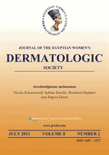
Journal of Egyptian Womens Dermatological Society
Transforming Women's Health Through Dermatological ScholarshipThe Journal of Egyptian Women's Dermatological Society, published by Wolters Kluwer Medknow Publications, is an essential platform dedicated to advancing the field of dermatology through a valuable focus on women's health issues. Established to provide an open access outlet since 2019, this journal aims to disseminate research, case studies, and reviews that address the unique dermatological needs and concerns of women, particularly in the Egyptian context. Despite its current ranking in the Q4 category in dermatology and a Scopus rank of #117 out of 142 with a 17th percentile, the journal serves a critical role in fostering scholarly communication among researchers, clinicians, and academicians. With a commitment to promoting knowledge advancement and community engagement, this journal invites submissions that align with its objectives, specifically geared towards empirical research and innovative practices in dermatology impacting women's health.
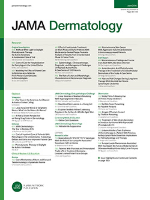
JAMA Dermatology
Leading the Way in Innovative Skin Research.JAMA Dermatology, an esteemed publication by the American Medical Association, is positioned at the forefront of dermatological research and clinical practice. With an ISSN of 2168-6068 and an E-ISSN of 2168-6084, this journal underscores a commitment to disseminating high-quality and impactful research within the field. Notably ranked Q1 in both Dermatology and Miscellaneous Medicine for 2023, JAMA Dermatology ranks among the top journals in its category, holding the impressive 3rd position out of 142 in Scopus's dermatology rankings, placing it in the 98th percentile. With converged years extending from 2013 to 2024, the journal emphasizes timely and critical advancements in dermatological science. Furthermore, as a champion of open access, it encourages a broad dissemination of knowledge, making essential research accessible to a wider audience. Researchers, professionals, and students alike will find JAMA Dermatology to be an invaluable resource for the latest findings, innovative therapies, and in-depth reviews that shape the future of dermatological health.
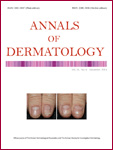
Annals of Dermatology
Transforming the landscape of dermatological knowledge.Annals of Dermatology is a prestigious academic journal published by the Korean Dermatological Association, focusing on the latest research and advancements in the field of dermatology. With a commitment to advancing knowledge in skin health and disease, this journal serves as a vital resource for researchers, clinicians, and students working in dermatology and related disciplines. Since its inception in 1989, it has evolved to consolidate its position in the academic community, boasting a Q2 ranking in the 2023 Dermatology category and a Scopus rank of #87 out of 142, placing it in the 39th percentile. Although it operates under a subscription model, the journal's impact factor reflects its significance in advancing dermatological research, attracting innovative studies and reviews that shape clinical practice. With a publication history extending from 1989 to 1996 and then from 2008 to the present, Annals of Dermatology continues to be an essential publication for those devoted to improving skin health.
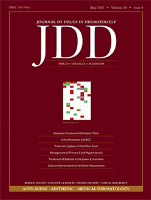
Journal of Drugs in Dermatology
Empowering professionals with vital dermatological insights.Journal of Drugs in Dermatology, an esteemed publication in the field of dermatology, serves as a vital resource for researchers, clinicians, and healthcare professionals dedicated to advancing knowledge and practices in skin-related therapies and treatments. Established in 2002 and published in the United States, this journal focuses on a wide range of topics pertinent to dermatological pharmacology and therapeutics, reflecting contemporary scientific advancements and innovative approaches to patient care. With a strong presence in Scopus rankings, situating it at rank #73 within the dermatology category, and achieving a commendable Q2 quartile classification in both dermatology and general medicine categories, the journal is committed to enhancing understanding of drug efficacy and safety in dermatological conditions. While the journal maintains a traditional access model, its impact factor underscores its significance in the research community, supporting the ongoing dialogue between academia and clinical practice. We invite professionals and students alike to explore the latest findings and contribute to the progressive discourse on dermatological treatments through this important publication.

JOURNAL OF COSMETIC SCIENCE
Advancing the Science Behind Beauty.Journal of Cosmetic Science, published by the Society of Cosmetic Chemists, serves as a pivotal resource for researchers and professionals in the fields of cosmetic science, dermatology, and chemistry. With a commitment to advancing the understanding of cosmetic formulations and skin biology, this journal has been providing a platform for critical scholarly exchange since its inception in 1996. Although currently categorized in Q4 quartiles across essential domains like Chemistry and Dermatology, the journal distinguishes itself with a focus on innovative research that drives the cosmetic industry forward. Researchers can access the journal through conventional routes as well as explore changes to its open-access policies, ensuring a broad dissemination of knowledge. As the cosmetic landscape evolves, this journal plays an important role in bridging the gap between scientific research and practical application, making it indispensable for students and professionals alike who are eager to stay at the forefront of cosmetic science.

Turk Dermatoloji Dergisi-Turkish Journal of Dermatology
Illuminating the path for dermatology professionals worldwide.Turk Dermatoloji Dergisi-Turkish Journal of Dermatology, published by Wolters Kluwer Medknow Publications, is a prominent platform dedicated to advancing the field of dermatology in Turkey and beyond. With an ISSN of 1307-7635 and an E-ISSN of 1308-5255, this journal plays a vital role in disseminating contemporary research and clinical advancements within the domain. While it is positioned in the Q4 quartile of dermatology journals, its contributions are essential for academics, medical practitioners, and students averse to the latest trends and breakthroughs in skin health. The journal assures accessibility to a broad audience, fostering knowledge exchange, collaboration, and innovation. Given its unique perspective rooted in Turkish dermatological practices, the Turkish Journal of Dermatology serves as a significant resource for enhancing professional competence and driving forward the science of dermatology through its vivid discussions and case studies. For researchers seeking a dedicated venue to publish their work or for professionals eager to stay informed, this journal is an indispensable resource in the ever-evolving landscape of dermatology.
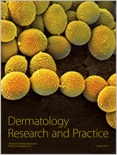
Dermatology Research and Practice
Shaping the future of skin health, one study at a time.Dermatology Research and Practice is a premier open access journal published by HINDAWI LTD, dedicated to advancing the field of dermatology since its establishment in 2009. With a respectable impact factor and a ranking of #42 out of 142 in the Scopus Medicine - Dermatology category, the journal stands in the 70th percentile, reflecting its influence and relevance in contemporary dermatological research. Based in Egypt, it provides a platform for groundbreaking studies that shape clinical practice and policy worldwide. The journal covers a wide range of topics within dermatology, including but not limited to clinical research, epidemiology, and patient care, making it an essential resource for researchers, healthcare professionals, and students seeking to enhance their understanding and contribute to the field. Emphasizing open access, Dermatology Research and Practice ensures that vital research findings are readily available to the global community, fostering collaboration and innovation in dermatology.

Turkderm-Turkish Archives of Dermatology and Venerology
Fostering Excellence in Skin Health ResearchTurkderm - Turkish Archives of Dermatology and Venerology, published by GALENOS PUBL HOUSE, serves as a vital platform for the dissemination of innovative research and advancements in the fields of dermatology and venerology. With an Open Access policy implemented since 2002, this journal aims to provide free and unrestricted access to significant findings, ensuring that vital information reaches a global audience. Based in Turkey, the journal has positioned itself as an important resource for professionals, researchers, and students alike, despite currently being categorized in Q4 of both Dermatology and Infectious Diseases as per the 2023 metrics. Although it faces competition in the rankings, with a Scopus standing of #131 in Dermatology and #331 in Infectious Diseases, its dedication to advancing knowledge in these critical health areas is unwavering. The journal continually invites original research, reviews, and case studies that enhance clinical practices and foster understanding in the dermatological community.